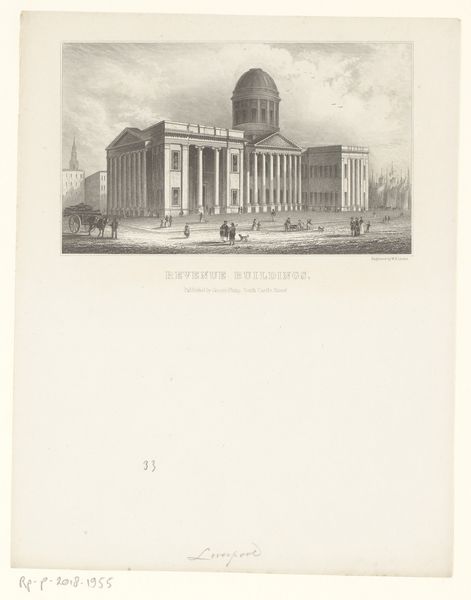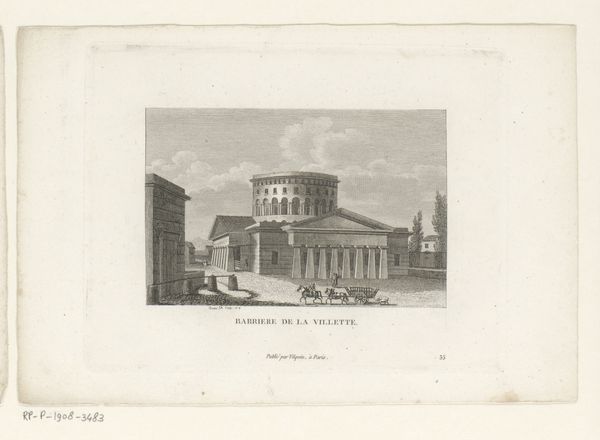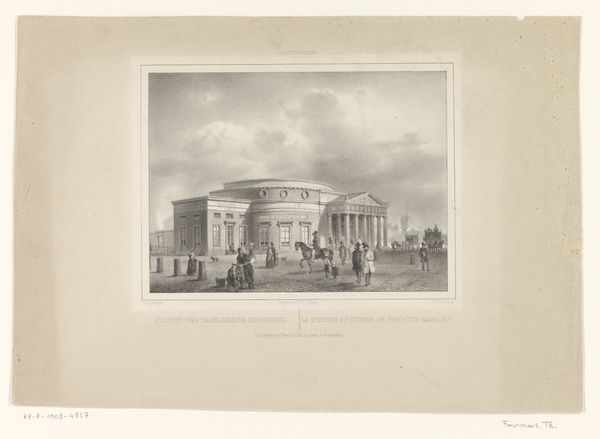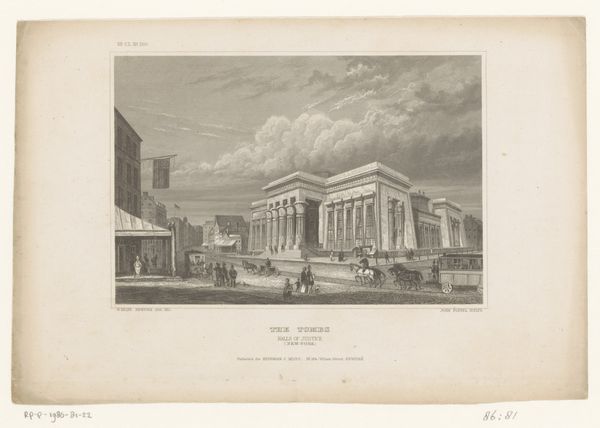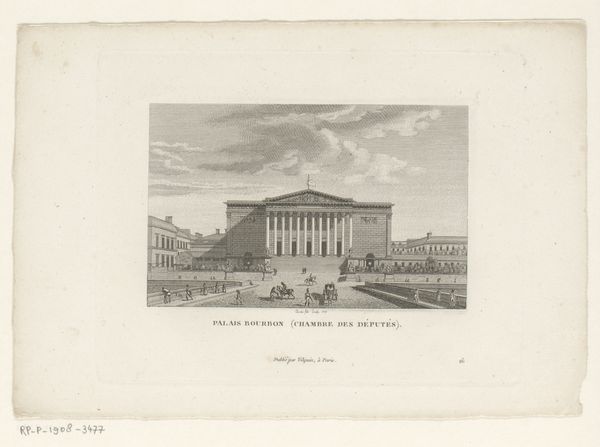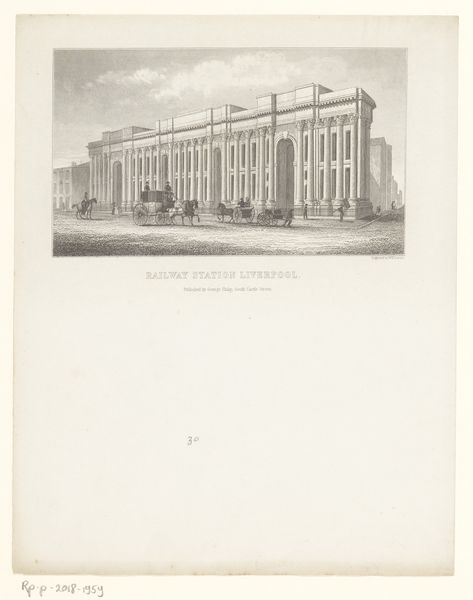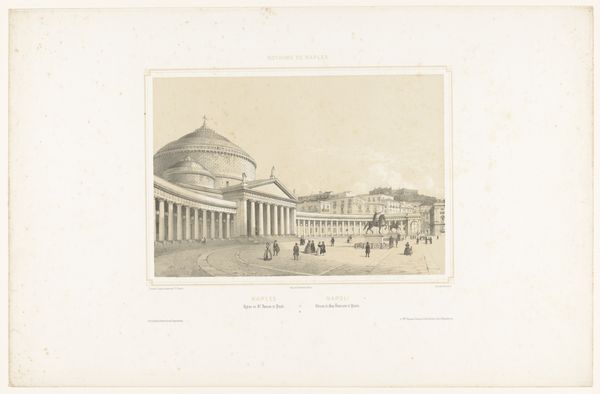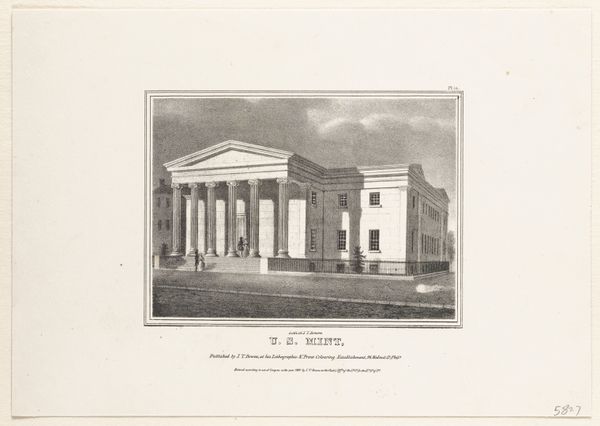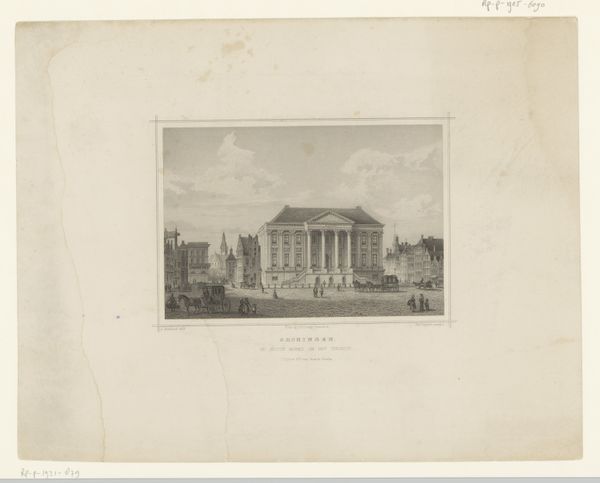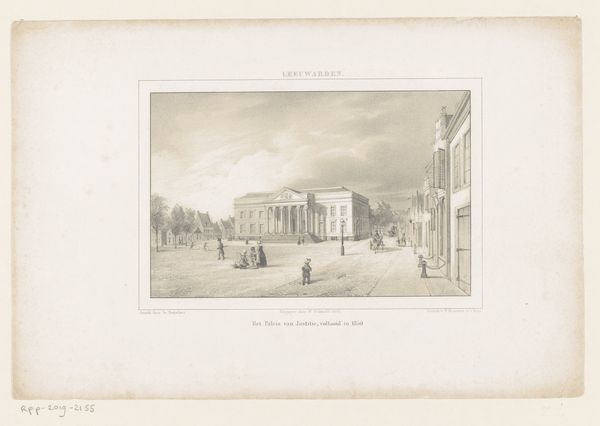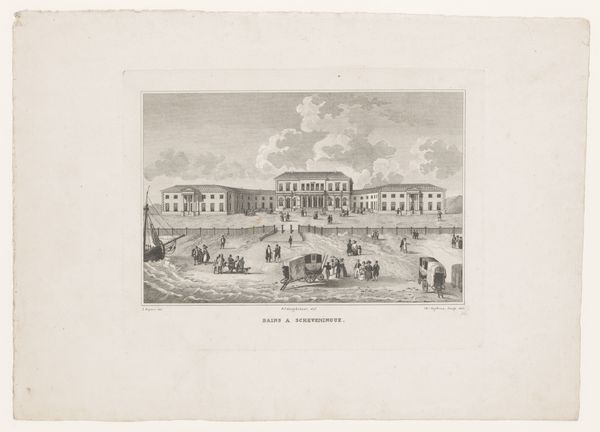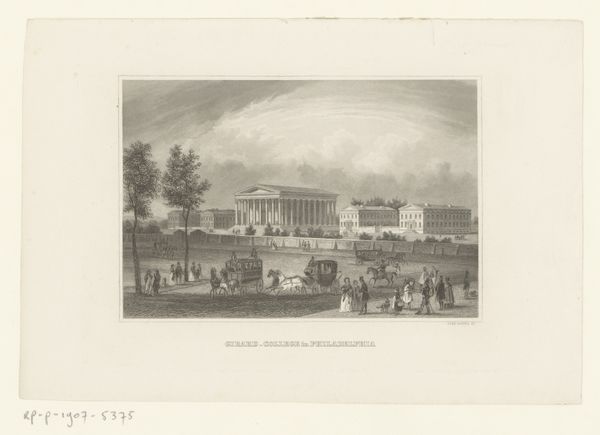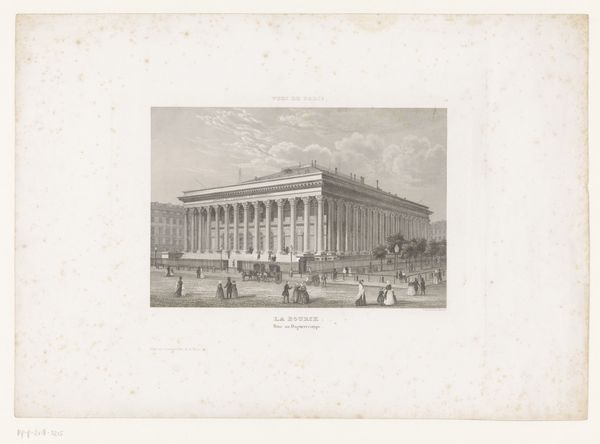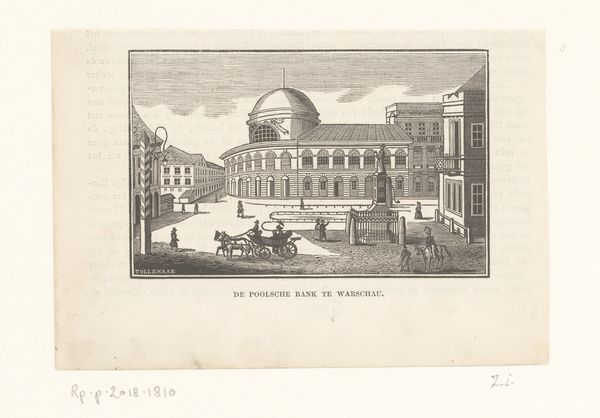
print, engraving, architecture
#
neoclacissism
# print
#
old engraving style
#
landscape
#
historical photography
#
line
#
cityscape
#
history-painting
#
engraving
#
architecture
#
realism
Dimensions: height 118 mm, width 180 mm
Copyright: Rijks Museum: Open Domain
Curator: Here we have "Gezicht op het Capitool in Washington," an engraving dating from 1835 to 1863, currently held in the Rijksmuseum. It depicts a tranquil scene of the United States Capitol building. Editor: It strikes me as meticulously rendered. The detail achieved through the engraving process is quite impressive, but what fascinates me is the staging—the building appears grand, yet very accessible, framed by these figures casually enjoying the foreground space. Curator: Precisely. What interests me about this piece is its social and institutional context. Produced during a period of significant nation-building in the US, this print would have served as a form of public imagery, promoting the idea of a stable and enduring republic. Note how the landscape, including the people, is neatly arranged. Editor: And there’s a clear class element presented in how the population is enjoying the space around it, adding to the perceived image of serene, stately, and stable leadership that one sees with neo-classicism. This level of precision surely came from specialized labor, indicating a complex economy supporting art production even back then. It emphasizes the constructed nature of the image. The availability and consumption of these images no doubt played a part in reinforcing civic identity. Curator: That’s an astute observation. The material production of this image connects to the broader economy and political landscape of the time. These prints, circulated widely, contributed to the visual culture and shaped public perceptions. One can imagine the impact of possessing and displaying an image of the US Capitol as a kind of patriotic assertion. Editor: Definitely. Thinking about the original copperplate, the tools used, and the engraver’s skill, there’s a real physical relationship to power. Each print is a tangible piece of that, available for consumption. It goes beyond pure representation and becomes a physical artifact intertwined with political symbolism. Curator: This really opens up discussions on the politics of imagery and how these printed images functioned in constructing a national narrative. I wonder how the engraver perceived his role in representing the burgeoning American state, or if the intended view to promote the virtues of neoclassicism made this art form such a compelling way of engaging people into the history being written at the time. Editor: And I'm pondering about the physical work, and all those choices. This artwork truly underscores how deeply intertwined art, politics, and economics have always been. Curator: Indeed, it offers valuable insights into the construction and dissemination of political imagery in the 19th century.
Comments
No comments
Be the first to comment and join the conversation on the ultimate creative platform.
